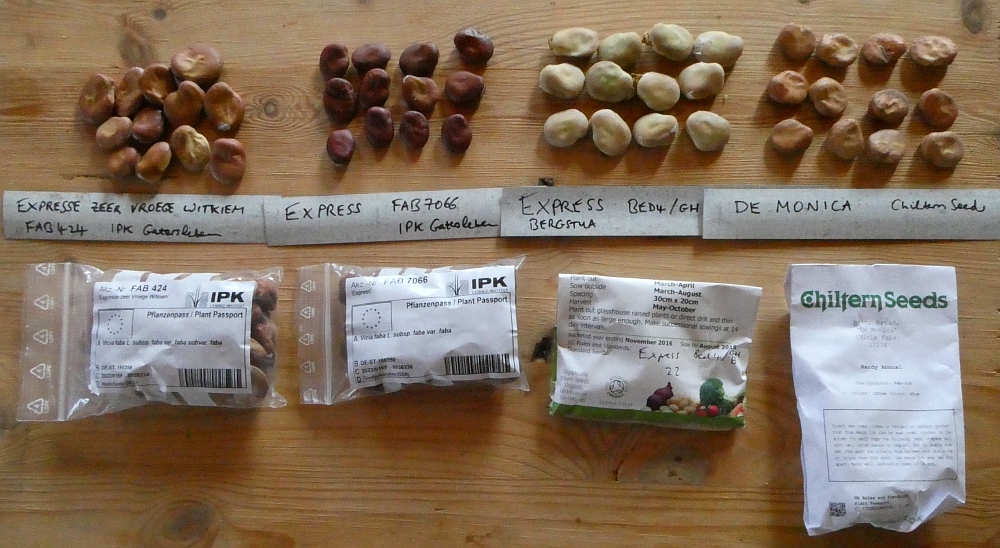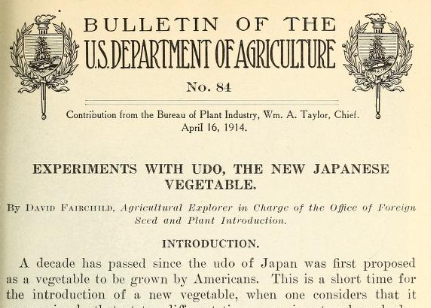Yesterday, I introduced Agricultural Explorer David Fairchild who, inspired from visiting Japan, was determined to try to introduce udo (Aralia cordata) and wrote an interesting paper 120 years ago giving more details about this novel perennial vegetable:
Udo introduction to the US with cultivation instructions (1903)
11 years later in 1914, he wrote a really interesting report summing up his experiences with udo. It blows my mind to read how much work was done on this plant over 100 years ago, but sad to see that it was never adopted in a big way! You can read the whole report and I recommend you do, but I’ve picked out some titbits from the report that I found particularly interesting followed by a few other interesting excerpts from various inventories of introduced plants to the US!
Daily Archives: April 10, 2023
Selecting for a local early broad bean
I sowed broad (fava) bean / bondebønner (Vicia faba) seed indoors yesterday as there’s still snow where I’d planned to put them outside. In addition to my late broad bean grex with a mix of colours, I thought it would also be worthwhile to start developing a local early variety which could also potentially be useful in more marginal areas such as North Norway and mountain areas. I’m starting with 4 early varieties, two from IPK Gatersleben: 1) Expresse Zeer Vroege Witkiem (meaning “very early white germ (seed)” (FAB424), Express (FAB 7066), my own selection of the commercial variety Express which I’ve grown as my early sort for some years and another purportedly early variety De Monica from Chiltern Seeds. I’ll select mainly for earliness and seed size.
Two spring signs
This spring sign today went unnoticed for many years, one of many moth species that has been registered feeding on Salix caprea (goat willow / selje) in spring, soon to be in flower here: this is the satellite / bølgefly (Eupsilia transversa); it overwinters as an adult. I’ve recorded it over the last few years from 14th March to 2nd May and once in the autumn. Its larval food plants are a variety of broad-leaved trees and shrubs including blackthorn, hawthorn, hazel, field maple, sweet chestnut and elms (all of which are found in the garden). The first bumblebees have been out in the garden this week on snowdrops and Crocus, here a tree bumblebee / trehumle (Bombus hypnorum), one of the commonest species here. It will too soon move over to goat willow (selje)!
The first bumblebees have been out in the garden this week on snowdrops and Crocus, here a tree bumblebee / trehumle (Bombus hypnorum), one of the commonest species here. It will too soon move over to goat willow (selje)!













